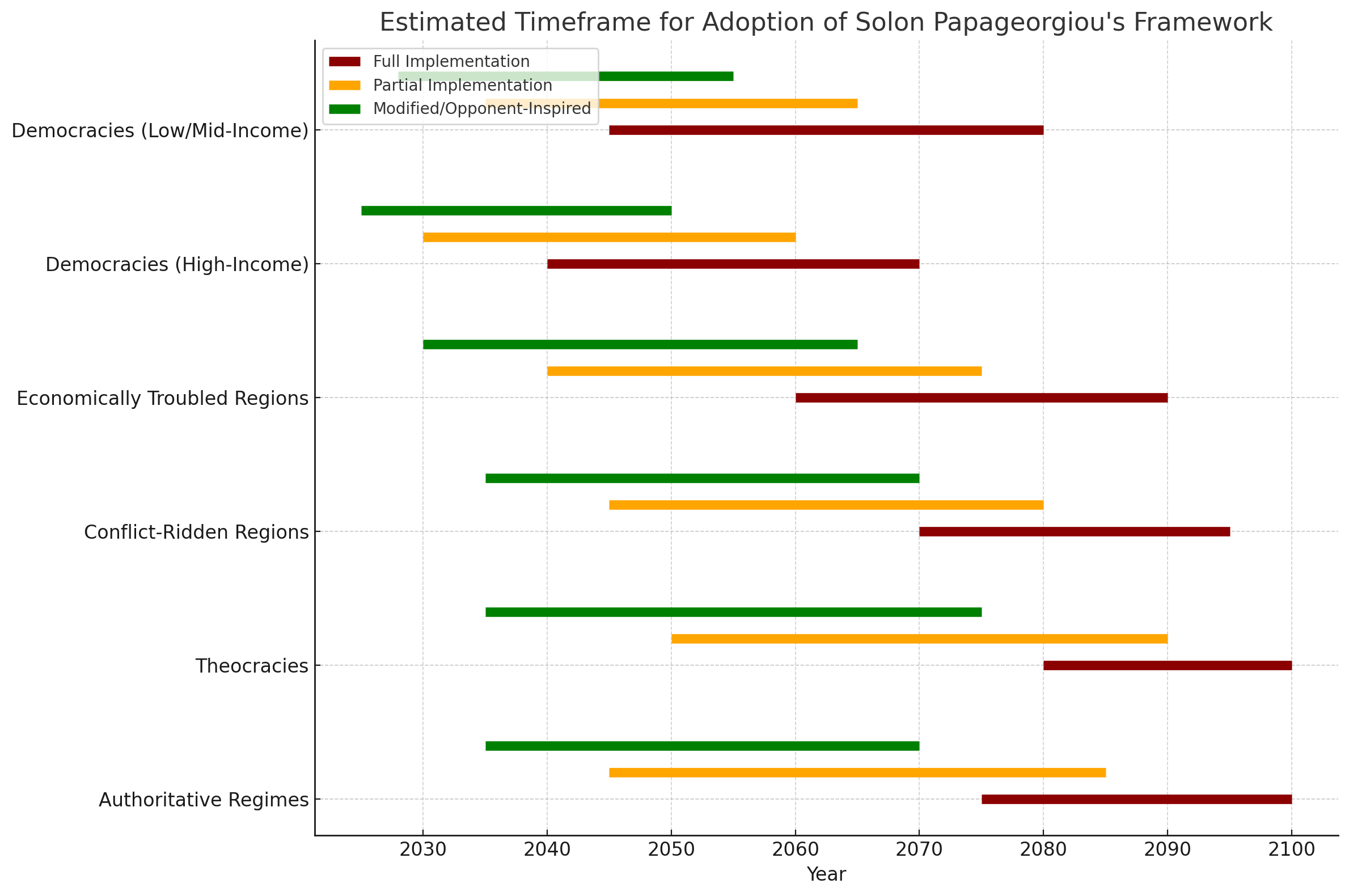Build Your Own Home Gym: Affordable, Effective, and Convenient
Creating a home gym doesn't need to be expensive or space-consuming. With the right combination of compact equipment and engaging fitness apps, you can set up a versatile workout space that covers cardio, strength, flexibility, and recovery. Here's a step-by-step guide to assembling your home gym, complete with suggested equipment and apps available on Amazon and your smartphone.
Essential Equipment for Your Home Gym
- Mini Stepper Machine
- Sunny Health & Fitness Mini Stepper: A compact cardio machine that simulates stair climbing. Comes with resistance bands for a full-body workout.
- Benefits: Boosts cardiovascular health, tones legs, and engages your core. The resistance bands add an upper-body element.
- Cost: ~$75–$100
- Pull-Up Bar
- Craftsboys Pull-up Bar with Resistance Bands: A sturdy, adjustable doorway pull-up bar. Includes resistance bands for versatile training.
- Benefits: Builds upper body and core strength, with added resistance training options for variety.
- Cost: ~$25–$35
- Adjustable Dumbbell Set
- VAZILLIO Adjustable Dumbbell Set (2x 5kg): Non-slip, neoprene-coated dumbbells that can be adjusted for different weights.
- Benefits: Ideal for strength training, toning, and improving bone density.
- Cost: ~$50–$70
- Foldable Yoga Mat
- Good Nite Foldable Yoga Mat: A lightweight and portable mat with a non-slip surface.
- Benefits: Supports yoga, stretching, and Pilates workouts, providing a comfortable and safe base.
- Cost: ~$25–$30
- Bluetooth Keyboard
- Portable Folding Bluetooth Keyboard: Use this to hold your smartphone or tablet during yoga or Pilates sessions with apps like Daily Yoga.
- Benefits: Keeps your device in place for guided workouts, enhancing your focus and posture.
- Cost: ~$25
- Pilates Bar Set
- Qicool Adjustable Pilates Bar Kit: Comes with resistance bands and door anchors for versatile exercises.
- Benefits: Excellent for full-body toning, improving posture, and core strengthening.
- Cost: ~$40–$60
- Cordless Mini Massager
- Portable Hand-held Electric Massager: Ideal for relieving muscle soreness and enhancing recovery after workouts.
- Benefits: Improves circulation, relieves tension, and speeds up muscle recovery.
- Cost: ~$20–$30
- Adjustable Jump Rope
- SPORTBIT Adjustable Jump Rope: Lightweight and durable for speed skipping.
- Benefits: Great for cardio, coordination, and agility training.
- Cost: ~$10–$15
- Home Bike
- Features: Look for a bike with multiple resistance levels and gears. Suggested apps like CycleGo and Zwift turn cycling into a gamified and engaging experience.
- Benefits: Provides a low-impact cardio workout while engaging your legs and improving stamina.
- Cost: ~$200–$400
Suggested Apps for Your Workouts
- Running Apps:
- Zombies, Run! + Marvel Move: Turn running into an adventure with storylines that keep you motivated.
- Cost: ~$5/month
- Calisthenics Apps:
- 200 Push Ups, 200 Squats, 200 Situps, Plank Challenge: Track progress and challenge yourself with structured programs.
- Cost: Free with optional upgrades.
- Cycling Apps:
- CycleGo: Simulates real-world cycling routes.
- Zwift: A virtual cycling world with competitions and community events.
- Cost: ~$15–$20/month
- Yoga App:
- Daily Yoga: Offers guided yoga sessions for beginners to advanced practitioners.
- Cost: ~$10/month
Benefits of Combining Equipment and Apps
- Cardio Training: Mini stepper, jump rope, and bike with apps like Zwift keep your heart healthy and burn calories.
- Strength Training: Dumbbells, pull-up bar, and resistance bands build muscle and improve endurance.
- Flexibility and Core: Yoga mat and Pilates bar enhance flexibility, posture, and core strength.
- Recovery: The massager ensures muscle relaxation and recovery, preventing injuries.
- Gamification: Apps like Zombies, Run! and Zwift make workouts fun and engaging, keeping you consistent.
Total Costs
- One-Time Equipment Cost: ~$450–$800, depending on the bike and Pilates set chosen.
- Monthly App Costs: ~$30–$40 if subscribing to multiple apps.
Conclusion
With this home gym setup, you can create a versatile and engaging workout space for a fraction of the cost of a gym membership. This combination of compact equipment and interactive apps ensures you'll stay motivated, fit, and healthy—all from the comfort of your home.
Benefits of Each Workout Equipment
- Mini Stepper Machine
- Cardiovascular Fitness: Improves heart health and burns calories with a low-impact workout.
- Leg and Glute Strength: Tones thighs, calves, and glutes with each step.
- Compact Design: Easy to store and perfect for small spaces.
- Pull-Up Bar with Resistance Bands
- Upper Body Strength: Targets back, shoulders, arms, and core.
- Versatility: Resistance bands allow for assisted pull-ups and additional exercises like rows or tricep extensions.
- Adjustability: Fits most doorways and accommodates various fitness levels.
- Adjustable Dumbbell Set
- Strength Training: Builds muscle, strengthens bones, and improves metabolism.
- Customizable Weight: Adjust weights as you progress, making it suitable for beginners and advanced users.
- Non-Slip Grip: Ensures safety and comfort during workouts.
- Foldable Yoga Mat
- Comfort and Support: Provides a cushioned surface for yoga, stretching, or Pilates.
- Non-Slip Surface: Ensures stability during poses and exercises.
- Portability: Easy to fold and carry, ideal for travel or limited storage space.
- Pilates Bar Set with Resistance Bands
- Full-Body Workout: Engages the core, arms, legs, and back simultaneously.
- Posture Improvement: Strengthens muscles that support a healthy posture.
- Low-Impact Exercise: Perfect for injury recovery and building functional strength.
- Adjustable Jump Rope
- Cardio and Coordination: Improves cardiovascular health, endurance, and agility.
- Calorie Burning: Burns up to 10 calories per minute, making it a time-efficient workout.
- Portable: Lightweight and easy to carry for on-the-go workouts.
- Home Bike with Apps
- Endurance Building: Strengthens the heart and lungs while toning the lower body.
- Interactive Experience: Apps like Zwift or CycleGo make cycling engaging with virtual courses and challenges.
- Low-Impact Cardio: Great for joints while offering a full-body calorie burn.
- Cordless Mini Massager
- Muscle Recovery: Relieves soreness and tension, speeding up recovery after workouts.
- Improved Circulation: Promotes blood flow, reducing stiffness and enhancing relaxation.
- Portability: Small and battery-operated, perfect for use anywhere.
Tips for Staying Motivated with Home Workouts
- Set Clear Goals
- Define specific fitness goals, such as weight loss, strength gains, or flexibility improvements.
- Break these into smaller milestones to celebrate progress.
- Create a Dedicated Space
- Designate a clean, comfortable area in your home for workouts.
- Keep equipment organized and within easy reach.
- Follow a Routine
- Schedule workouts at the same time each day to build consistency.
- Treat it like an appointment you can’t miss.
- Use Engaging Apps
- Apps like Zombies, Run! and Zwift turn workouts into fun, interactive experiences.
- Track your progress using fitness apps for additional motivation.
- Mix It Up
- Rotate exercises to keep things interesting. Alternate between cardio, strength, and flexibility workouts.
- Try new challenges, such as increasing weights or adding resistance bands.
- Track Your Progress
- Keep a workout journal or use an app to log your exercises, reps, and performance.
- Seeing improvement over time boosts motivation.
- Reward Yourself
- Set rewards for achieving milestones, such as buying new workout gear or taking a rest day.
- Positive reinforcement keeps you motivated.
- Get a Workout Buddy
- Share your fitness journey with a friend or family member.
- Virtual workout partners or challenges can also keep you accountable.
- Listen to Music or Podcasts
- Create a playlist of energetic music or listen to podcasts to make workouts enjoyable.
- Background audio helps you stay focused and entertained.
- Celebrate Small Wins
- Recognize and reward every improvement, no matter how small.
- This reinforces the habit and keeps motivation high.
By combining these motivational strategies with the versatile equipment outlined above, you can maintain an effective and enjoyable home workout routine! Let me know if you'd like help finding additional resources or creating a tailored fitness plan.
Benefits of Yoga Mats for Home Workouts
- Comfort and Support:
- Provides a cushioned surface, reducing strain on joints and pressure points during exercises like yoga, Pilates, or bodyweight movements.
- Ensures stability and balance, especially for poses that require prolonged focus or precision.
- Non-Slip Surface:
- Prevents slipping during intense or sweaty sessions, reducing the risk of injury.
- Ideal for dynamic exercises such as planks or push-ups.
- Hygienic Barrier:
- Creates a clean layer between your body and the floor, especially in shared spaces or hard-to-clean surfaces.
- Easy to wipe down and maintain for personal hygiene.
- Portability:
- Foldable and lightweight mats are easy to carry, making them ideal for workouts at home, outdoors, or while traveling.
- Versatility:
- Can be used for multiple activities like stretching, core exercises, meditation, and HIIT workouts.
- Supports proper alignment and comfort during any floor-based workout.
- Noise Reduction:
- Minimizes noise and vibrations from exercises like jumping or burpees, making it neighbor-friendly in apartment settings.
Advantages of Using Fitness Apps
- Guided Workouts:
- Apps provide structured plans for all fitness levels, ensuring exercises are done safely and effectively.
- Features like video demonstrations and voice instructions make workouts easy to follow.
- Convenience:
- Accessible anytime, anywhere, fitting into busy schedules.
- Removes the need for gym memberships or professional trainers, saving time and money.
- Customization:
- Tailor workouts to your goals (e.g., weight loss, strength, endurance).
- Many apps adjust routines based on your progress and feedback.
- Progress Tracking:
- Monitor achievements like calories burned, miles run, or weight lifted.
- Visual representations of progress (charts, graphs) motivate continued effort.
- Motivation Through Gamification:
- Features like challenges, leaderboards, and rewards make workouts fun and engaging.
- Apps like Zombies, Run! and Zwift turn fitness into interactive games.
- Variety of Exercises:
- Access to diverse workouts (cardio, strength, yoga, HIIT) ensures you never get bored.
- Specialized apps target specific goals, such as running, cycling, or calisthenics.
- Community and Support:
- Connect with other users for accountability and encouragement.
- Many apps have forums or social features to share progress and tips.
- Affordability:
- Most apps offer free versions or affordable subscriptions, making them accessible for all budgets.
- They provide professional-level guidance at a fraction of the cost.
- Personalized Feedback:
- Advanced apps analyze your performance and offer tips for improvement.
- Features like AI-powered coaching simulate a personal trainer experience.
- Integration with Wearable Devices:
- Sync with fitness trackers or smartwatches for real-time monitoring of metrics like heart rate, steps, or sleep quality.
By combining yoga mats with fitness apps, you create a versatile and comfortable home workout setup that enhances safety, efficiency, and enjoyment. This combination ensures you stay consistent and motivated while progressing toward your fitness goals.
How to Find Reliable Fitness Apps
Finding the right fitness app involves evaluating your goals, needs, and the app's features. Here are steps to ensure you choose a reliable one:
- Define Your Fitness Goals:
- Determine whether you want to focus on cardio, strength, flexibility, weight loss, or a combination.
- Check User Reviews and Ratings:
- Look for apps with consistently high ratings (4+ stars) on app stores.
- Read user reviews to understand strengths, weaknesses, and how it aligns with your needs.
- Explore Features and Content:
- Look for key features like personalized plans, video demonstrations, progress tracking, and community support.
- Apps like FitOn and MyFitnessPal offer comprehensive tools for tracking diet and exercise.
- Trial Period or Free Version:
- Choose apps with free trials or basic versions to test their usability before committing to a paid plan.
- Expert Recommendations:
- Fitness blogs, trainers, or influencers often recommend trusted apps.
- Popular choices include Nike Training Club, Zwift, Headspace (for mindfulness), and Daily Yoga.
- Focus on Specialization:
- If you're targeting a specific activity (e.g., yoga, running, calisthenics), choose specialized apps like Daily Yoga, Zombies, Run!, or 200 Push-Ups.
- Cross-Device Compatibility:
- Ensure the app works across devices you own, like smartphones, tablets, or smart TVs, for convenience.
- Privacy and Security:
- Check app permissions and privacy policies to ensure your data is secure.
Benefits of Yoga for Home Workouts
- Improves Flexibility:
- Regular practice enhances joint and muscle flexibility, improving range of motion and reducing stiffness.
- Strengthens Muscles:
- Many poses require holding your body weight, building strength in core, arms, and legs.
- Reduces Stress:
- Incorporates breathing exercises and mindfulness, which lower cortisol levels and promote relaxation.
- Boosts Mental Clarity:
- Encourages focus and mindfulness, helping clear the mind and improve concentration.
- Enhances Balance and Posture:
- Strengthens stabilizing muscles and aligns the body for better balance and posture.
- Low-Impact Exercise:
- Gentle on joints and suitable for people of all fitness levels, including those recovering from injuries.
- Customizable for All Levels:
- Accessible for beginners with simple poses and challenging for advanced practitioners with complex flows.
- Improves Circulation:
- Encourages blood flow through stretching and poses that stimulate the cardiovascular and lymphatic systems.
- Convenience:
- Requires minimal equipment (a yoga mat) and space, making it perfect for home workouts.
- Supports Weight Management:
- Combines physical activity with mindfulness, leading to better control over eating habits and improved metabolism.
- Increases Energy:
- Gentle movement combined with breathing exercises revitalizes the body and mind, reducing fatigue.
- Improves Sleep:
- Relaxation techniques in yoga help prepare the body for restful sleep by reducing tension and calming the mind.
By combining yoga's physical and mental benefits with the convenience of home workouts, you create a sustainable fitness practice that promotes holistic well-being.
Holistic Home Workout Plan Using Home-Gym Equipment, Fitness Apps, and Other Apps
This comprehensive workout plan integrates your home-gym equipment and fitness apps for a balanced routine, covering cardio, strength training, flexibility, mindfulness, and recovery. Each workout includes equipment, apps, and specific exercises/poses to target all major fitness aspects.
Day 1: Cardio and Core (Heart and Stamina Building)
Equipment Needed:
- Mini Stepper Machine
- Adjustable Jump Rope
- Yoga Mat
- CycleGo/Zwift App (if using a home bike)
Workout Plan:
- Warm-Up (5–10 Minutes):
- Jump rope at a moderate pace for 2 minutes.
- Stepper machine at a slow pace to activate muscles.
- Cardio Session (20 Minutes):
- Mini Stepper Machine: Perform 2 sets of 10 minutes with a 1-minute rest.
- Alternative: Home Bike with the CycleGo App, simulating hill climbs.
- Core Circuit (3 Rounds):
- Plank: Hold for 30–60 seconds (use Plank Workout App for guidance).
- Bicycle Crunches: 15 reps per side.
- Mountain Climbers: 20 reps per leg.
- Cool Down and Stretch (10 Minutes):
- Cat-Cow Pose on the Yoga Mat (3 rounds).
- Cobra Stretch (hold for 30 seconds).
- Forward Fold to stretch hamstrings (hold for 30 seconds).
Day 2: Strength Training
Equipment Needed:
- Adjustable Dumbbells
- Pull-Up Bar
- Resistance Bands (from Pilates Bar Set)
- Habitica App for tracking reps and sets.
Workout Plan:
- Warm-Up (5 Minutes):
- Bodyweight squats (10 reps).
- Push-ups (5–10 reps).
- Upper Body Strength (3 Sets):
- Pull-ups on the Pull-Up Bar: 5–8 reps (use bands for assistance).
- Dumbbell Shoulder Press: 10–12 reps.
- Lower Body Strength (3 Sets):
- Dumbbell Goblet Squats: 12–15 reps.
- Deadlifts with Dumbbells: 10–12 reps.
- Core and Stability:
- Side Plank: Hold for 30 seconds per side.
- Russian Twists: 15 reps per side using a dumbbell.
- Cool Down and Recovery:
- Use the Cordless Mini Massager on sore muscles.
- Perform a Child's Pose on the Yoga Mat for 30 seconds.
Day 3: Flexibility and Balance
Equipment Needed:
- Yoga Mat
- Pilates Bar Kit
- Daily Yoga App
Workout Plan:
- Warm-Up (5 Minutes):
- Sun Salutations (guided by Daily Yoga App).
- Pilates and Yoga Fusion (20 Minutes):
- Use the Pilates Bar Kit for resistance during:
- Standing Leg Kicks (10 reps per leg).
- Seated Rows (12 reps).
- Poses:
- Warrior II: Hold for 30 seconds per side.
- Tree Pose: Hold for 30 seconds per side.
- Downward Dog: Hold for 30 seconds.
- Use the Pilates Bar Kit for resistance during:
- Breathwork and Relaxation:
- Guided breathing session with the Calm App (5 minutes).
- Child's Pose for relaxation (hold for 1 minute).
Day 4: Recovery and Active Rest
Equipment Needed:
- Cordless Mini Massager
- Sleep Monitor App
- SuperBetter App for mindfulness challenges.
Activities:
- Active Recovery:
- Light walking or stretching for 15–20 minutes.
- Use the Cordless Mini Massager to target tight areas.
- Mindfulness Session:
- Complete a Calm App meditation or SuperBetter resilience exercise.
- Sleep Hygiene:
- Track sleep quality with the Sleep Monitor App.
- Use Sleep Sounds to create a calming environment.
Day 5: Full-Body Strength and Cardio Combo
Equipment Needed:
- Mini Stepper
- Adjustable Dumbbells
- Pull-Up Bar
- Jump Rope
- Zwift App (if using the bike).
Workout Plan:
- Warm-Up (5 Minutes):
- Jump rope at a light pace.
- Stepper machine at moderate speed.
- Strength Circuit (3 Rounds):
- Dumbbell Squats: 12 reps.
- Pull-Ups: As many as possible.
- Dumbbell Deadlifts: 10 reps.
- Cardio Intervals:
- Use the Mini Stepper or Home Bike for 10 minutes of high-intensity intervals (e.g., 30 seconds fast, 1 minute slow).
- Cool Down and Stretch:
- Perform hip stretches (Butterfly Pose for 1 minute).
- Use Pilates Bar for deep hamstring stretches.
Tips for Staying Consistent
- Use Habitica or Ultiself to track your progress and maintain motivation.
- Log exercises in EasyNotes or a Remarkable Tablet for detailed tracking.
- Incorporate mindfulness apps like Calm or Journey to stay focused on long-term goals.
- Gamify your workouts with SuperBetter or challenges in CycleGo/Zwift.
By combining this structured plan with the equipment and apps, you’ll create a dynamic, holistic workout routine that improves strength, cardio, flexibility, and mental well-being.
How to Optimize Your Home Gym Routine
- Set Clear Goals:
- Define specific objectives, such as improving strength, losing weight, enhancing flexibility, or boosting endurance.
- Break these goals into measurable milestones (e.g., "Increase dumbbell weight by 2 kg in 4 weeks").
- Create a Balanced Schedule:
- Include cardio, strength, flexibility, and recovery days to avoid overworking specific muscles.
- Follow a 5-day schedule with at least two rest or active recovery days.
- Track Progress:
- Use apps like Habitica or MyFitnessPal to log workouts, weight, and reps.
- Periodically test your performance (e.g., track running times, measure plank holds).
- Incorporate Variety:
- Rotate equipment (e.g., switch between jump rope and the mini stepper for cardio).
- Mix up routines with apps like Nike Training Club to prevent plateaus.
- Optimize Space and Equipment Use:
- Designate a clean, distraction-free workout area.
- Organize equipment for quick transitions between exercises.
- Use Fitness Apps for Guidance:
- Apps like Zwift and Daily Yoga provide virtual coaches to guide your workouts.
- Try workout challenges in apps like Strava to stay motivated.
- Focus on Form:
- Watch tutorials or use apps like FitOn for proper technique to avoid injury.
- Start with lighter weights or slower speeds to ensure accuracy.
- Prioritize Recovery:
- Use tools like a Cordless Mini Massager or apps like Calm for mindfulness.
- Track sleep patterns with Sleep Monitor to ensure adequate rest.
Additional Recommended Fitness Apps
- Nike Training Club:
- Offers guided strength, cardio, and yoga workouts for all fitness levels.
- Free with optional premium content.
- Strava:
- Tracks running, cycling, and other outdoor activities.
- Gamified features like leaderboards and community challenges.
- Cost: Free with optional premium (~$8/month).
- FitOn:
- Provides free workout videos across various categories (cardio, strength, yoga).
- Premium version includes meal plans and offline access (~$9/month).
- Seven – 7 Minute Workout:
- Ideal for quick, efficient workouts when time is limited.
- Cost: Free with optional premium.
- MapMyRun:
- Tracks running routes and metrics.
- Syncs with wearables for detailed performance analysis.
- Cost: Free with premium options (~$6/month).
- Yoga for Beginners by Down Dog:
- Focuses on yoga sequences for beginners.
- Offers customization based on duration, focus areas, and difficulty.
- Cost: Free with optional premium (~$8/month).
- Home Workout – No Equipment:
- Provides bodyweight exercises for strength and cardio.
- Includes video demonstrations and progress tracking.
- Cost: Free with in-app purchases.
- StrongLifts 5x5:
- Tracks progressive overload strength training.
- Ideal for weightlifters and gym enthusiasts.
- Cost: Free with premium features (~$20/year).
- StretchIt:
- Focuses on improving flexibility and mobility.
- Provides guided stretching routines for all levels.
- Cost: Free trial, ~$15/month for premium.
- Sworkit:
- Customizable workout plans for strength, cardio, yoga, and stretching.
- Features guided sessions and progress tracking.
- Cost: ~$10/month.
Tips for Maximizing App Usage
- Set Notifications: Enable reminders for workout sessions to maintain consistency.
- Track Progress: Log results in apps like MyFitnessPal to see improvements over time.
- Gamify Workouts: Participate in challenges (e.g., Strava leaderboards) to stay motivated.
- Pair with Wearables: Sync fitness trackers for more detailed insights into your performance.
- Combine Apps: Use complementary apps (e.g., Nike Training Club for workouts and Calm for mindfulness) for a holistic approach.
By combining a structured routine with these fitness apps, you can maximize the efficiency and enjoyment of your home gym workouts.
Water Intake During and Between Workouts
Proper hydration is critical for maximizing the benefits of your workout routine. Here's how to manage your water intake:
- Before Workouts:
- Drink 16–20 ounces of water about 2 hours before exercising.
- This ensures you're well-hydrated without feeling bloated.
- During Workouts:
- Sip 7–10 ounces of water every 10–20 minutes, especially during high-intensity or sweat-heavy sessions.
- For workouts lasting over an hour, consider electrolyte-enhanced water or a sports drink to replenish lost salts.
- After Workouts:
- Consume 16–24 ounces of water for every pound of body weight lost during exercise.
- Add electrolytes if you notice signs of dehydration like fatigue, dizziness, or dry mouth.
Nutrition Plan to Maximize the Effects of the Holistic Workout Plan
Pre-Workout Nutrition (30–60 Minutes Before)
- Why: Provides energy to fuel your workout.
- What to Eat:
- A combination of carbs and protein, such as:
- Whole-grain toast with peanut butter and a banana.
- Greek yogurt with berries and honey.
- A smoothie with almond milk, spinach, and oats.
- A combination of carbs and protein, such as:
Post-Workout Nutrition (Within 30 Minutes After)
- Why: Speeds recovery, replenishes glycogen stores, and supports muscle repair.
- What to Eat:
- A mix of protein and carbs, such as:
- Grilled chicken with quinoa and steamed broccoli.
- A protein shake with almond milk and a piece of fruit.
- Scrambled eggs with avocado and whole-grain bread.
- A mix of protein and carbs, such as:
Daily Nutrition Plan
- Breakfast:
- Oatmeal with almond butter, chia seeds, and fresh fruit.
- Herbal tea or black coffee.
- Lunch:
- Grilled salmon or tofu with brown rice and a side of mixed greens.
- Water or coconut water.
- Dinner:
- Lean turkey or lentil soup with sweet potatoes and steamed vegetables.
- Herbal tea.
- Snacks:
- Handful of nuts, a boiled egg, or apple slices with almond butter.
- Protein bars with low sugar content.
- Hydration:
- Aim for at least 2–3 liters of water daily, adjusted for activity level and body weight.
Burpees: A Perfect Addition
Burpees are a full-body, high-intensity exercise that fits seamlessly into any workout routine. Here's why they're valuable:
- Benefits:
- Strength and Cardio: Works multiple muscle groups while elevating your heart rate.
- Calorie Burning: Aids in weight loss and overall conditioning.
- Minimal Space Needed: Perfect for small home gym setups.
- Versatility: Can be scaled up (e.g., adding push-ups or jumps) for advanced fitness levels.
- How to Do Burpees:
- Step 1: Start standing with feet shoulder-width apart.
- Step 2: Drop into a squat and place your hands on the floor.
- Step 3: Kick your feet back into a push-up position.
- Step 4: Perform a push-up (optional for beginners).
- Step 5: Jump your feet back to the squat position.
- Step 6: Explosively jump into the air, reaching overhead.
- Integrating Burpees into the Plan:
- During Day 1 (Cardio and Core): Add 3 sets of 10 burpees between other cardio exercises.
- During Day 5 (Full-Body Strength): Use burpees as a finisher—do as many as possible in 2 minutes.
Effective Workout Routines
- HIIT (High-Intensity Interval Training):
- Short bursts of intense exercise (e.g., jump rope, burpees) followed by brief rest.
- Example: 30 seconds of burpees, 15 seconds rest, repeat for 10 rounds.
- Pyramid Training:
- Gradually increase reps each set (e.g., 5, 10, 15 burpees) and then decrease.
- Circuit Training:
- Combine strength, cardio, and core exercises.
- Example:
- 10 push-ups
- 15 squats
- 20 dumbbell rows
- 1-minute mini stepper
- Repeat 3 times.
- Tabata:
- 20 seconds of intense effort, 10 seconds rest, repeat for 8 rounds.
- Great for burpees or jumping squats.
By following these hydration, nutrition, and exercise strategies, along with the home gym equipment and apps, you can create a balanced, efficient, and effective fitness routine.
Workout Styles Explained: HIIT, Pyramid Training, Circuit Training, and Tabata
Each of these workout styles offers unique benefits tailored to different fitness goals. Understanding them can help you design effective routines for fat loss, strength, endurance, or overall fitness.
1. High-Intensity Interval Training (HIIT)
What is HIIT? HIIT alternates between short bursts of intense exercise and brief recovery periods. It’s designed for maximum calorie burn and cardiovascular improvement in a short time.
Benefits of HIIT:
- Efficiency: Achieves results in less time compared to steady-state cardio.
- Fat Burning: Promotes the "afterburn effect" (excess post-exercise oxygen consumption).
- Cardiovascular Fitness: Improves heart health and VO2 max.
- Versatility: Can be adapted to any fitness level and done anywhere.
Example HIIT Workouts:
- Beginner:
- 20 seconds of jumping jacks, 40 seconds rest.
- 20 seconds of bodyweight squats, 40 seconds rest.
- Repeat 6–8 rounds.
- Intermediate:
- 30 seconds of sprinting, 30 seconds walking.
- Repeat for 10–15 minutes.
- Advanced:
- 40 seconds burpees, 20 seconds rest.
- 40 seconds mountain climbers, 20 seconds rest.
- Repeat for 20 minutes.
Pro Tips for HIIT:
- Always warm up before starting.
- Focus on form during intense intervals.
- Cool down and stretch after sessions.
2. Pyramid Training
What is Pyramid Training? This method involves gradually increasing or decreasing the intensity, weight, or repetitions of exercises. It can be structured as ascending, descending, or full pyramids (both up and down).
Benefits of Pyramid Training:
- Progressive Overload: Gradually increases workload to build strength and endurance.
- Muscle Engagement: Targets a wide range of muscle fibers.
- Adaptable: Works for strength training, cardio, or bodyweight exercises.
Example Pyramid Workouts:
- Ascending Pyramid:
- Push-ups: 5 reps, 10 reps, 15 reps, 20 reps.
- Each set increases in reps.
- Descending Pyramid:
- Pull-ups: 12 reps, 10 reps, 8 reps, 6 reps.
- Reps decrease with each set.
- Full Pyramid:
- Squats: 10 reps, 15 reps, 20 reps, 15 reps, 10 reps.
- Combine ascending and descending structures.
Pro Tips for Pyramid Training:
- Start light to avoid fatigue early in the workout.
- Use proper form as intensity or weight increases.
- Rest between sets as needed, based on your fitness level.
3. Circuit Training
What is Circuit Training? Circuit training involves performing a series of exercises (a circuit) with minimal rest between them. Once the circuit is complete, it’s repeated multiple times.
Benefits of Circuit Training:
- Full-Body Workout: Combines strength, endurance, and cardio in one session.
- Time Efficiency: Packs a lot of work into a short timeframe.
- Variety: Keeps workouts engaging and challenging.
Example Circuit Training Routine:
- Perform each exercise for 45 seconds, rest 15 seconds between exercises. Complete 3 rounds:
- Push-ups.
- Bodyweight squats.
- Jumping jacks.
- Plank.
- Dumbbell rows.
Pro Tips for Circuit Training:
- Select exercises targeting different muscle groups for balance.
- Keep transitions between exercises quick to maintain intensity.
- Adjust the duration or intensity of exercises based on your fitness level.
4. Tabata
What is Tabata? Tabata is a specific form of HIIT, consisting of 20 seconds of maximum effort followed by 10 seconds of rest, repeated for 4 minutes (8 cycles).
Benefits of Tabata:
- Maximum Efficiency: Delivers high-intensity benefits in a short timeframe.
- Fat Loss: Burns calories and promotes the afterburn effect.
- Versatility: Can be applied to bodyweight, cardio, or weighted exercises.
Example Tabata Workout:
- 20 seconds burpees, 10 seconds rest.
- 20 seconds mountain climbers, 10 seconds rest.
- Repeat for 4 minutes.
Pro Tips for Tabata:
- Use a timer or Tabata-specific app to track intervals.
- Focus on maintaining intensity throughout each cycle.
- Limit Tabata sessions to 20 minutes to avoid overexertion.
Comparing the Workouts
| Workout Style | Best For | Duration | Intensity |
|---|---|---|---|
| HIIT | Fat loss, cardio, endurance | 15–30 minutes | High |
| Pyramid | Strength, endurance, progression | 20–40 minutes | Moderate to High |
| Circuit | Full-body workout, time efficiency | 20–45 minutes | Moderate |
| Tabata | Quick, intense calorie burning | 4–20 minutes | Very High |
Choosing the Right Workout
- Beginner: Circuit training or light pyramid workouts.
- Intermediate: HIIT or full pyramid structures.
- Advanced: Tabata or a combination of HIIT and circuit training.
By combining these styles or tailoring them to your goals, you can build effective, engaging workout routines.
Enhanced Holistic Home Workout Plan Incorporating HIIT, Pyramid Training, Circuit Training, and Tabata
This upgraded plan integrates advanced techniques like HIIT, pyramid training, circuit training, and Tabata while including a water intake program and an optimal nutrition plan. It ensures balanced development in strength, cardio, flexibility, mindfulness, and recovery.
New Water Intake Program
Why Hydration is Key:
- Enhances energy and performance.
- Aids recovery and prevents cramps.
- Improves metabolism and nutrient absorption.
Daily Intake:
- Baseline: 2.5–3 liters/day.
- Pre-Workout: 250–500 ml (30 minutes before).
- During Workout: 100–200 ml every 15 minutes.
- Post-Workout: 500–750 ml within 30 minutes of completion.
- Add electrolytes for intense sessions lasting over 60 minutes.
Optimal Nutrition Plan
Goals: Maximize energy, muscle recovery, and fat loss while maintaining overall health.
- Protein: 1.5–2 grams per kg of body weight daily.
- Lean meats, eggs, tofu, fish, lentils.
- Carbohydrates: 2–3 grams per kg of body weight daily.
- Whole grains, sweet potatoes, quinoa, fruits.
- Healthy Fats: 0.8–1 gram per kg of body weight daily.
- Avocados, nuts, seeds, olive oil.
- Pre-Workout Meal (1–2 hours before):
- Balanced carbs and protein (e.g., oatmeal with a scoop of protein powder).
- Post-Workout Meal (within 1 hour after):
- High-protein, moderate-carb meal (e.g., grilled chicken with sweet potatoes).
- Snacks:
- Greek yogurt with berries, handful of almonds.
- Hydration Foods:
- Include water-rich foods like cucumbers, oranges, and watermelon.
Enhanced Weekly Plan
Day 1: HIIT Cardio and Core (Heart and Stamina Building)
Equipment Needed:
- Mini Stepper Machine, Adjustable Jump Rope, Yoga Mat, CycleGo/Zwift App.
Workout Plan:
- Warm-Up (5 Minutes):
- Jump rope at a moderate pace.
- Mini stepper at a slow pace.
- HIIT Session (20 Minutes):
- 30 seconds of high-speed stepping, 1-minute rest. Repeat 8 cycles.
- Optional: High-intensity intervals on the home bike using CycleGo/Zwift.
- Core Circuit (Circuit Training):
- Plank: 30–60 seconds.
- Bicycle Crunches: 15 reps per side.
- Mountain Climbers: 20 reps per leg.
- Repeat 3 rounds.
- Cool Down and Stretch:
- Cat-Cow Pose, Cobra Stretch, Forward Fold (30 seconds each).
Day 2: Pyramid Strength Training
Equipment Needed:
- Adjustable Dumbbells, Pull-Up Bar, Resistance Bands.
Workout Plan:
- Warm-Up (5 Minutes):
- Bodyweight squats (10 reps), push-ups (5–10 reps).
- Pyramid Workout:
- Ascending Pyramid:
- Pull-Ups: 3, 5, 7 reps (use bands for assistance if needed).
- Dumbbell Goblet Squats: 10, 12, 15 reps.
- Deadlifts: 8, 10, 12 reps.
- Descending Pyramid:
- Reverse reps (15, 12, 10 for squats, etc.).
- Ascending Pyramid:
- Core Finisher:
- Russian Twists: 15 reps per side.
- Side Plank: Hold for 30 seconds per side.
- Cool Down:
- Child’s Pose, Seated Forward Fold.
Day 3: Circuit Training for Flexibility and Balance
Equipment Needed:
- Yoga Mat, Pilates Bar Kit, Daily Yoga App.
Workout Plan:
- Warm-Up (5 Minutes):
- Sun Salutations (guided by Daily Yoga App).
- Circuit (3 Rounds):
- Warrior II Pose: Hold for 30 seconds per side.
- Tree Pose: Hold for 30 seconds per side.
- Standing Leg Kicks (Pilates Bar): 10 reps per leg.
- Seated Rows (Pilates Bar): 12 reps.
- Relaxation:
- Guided breathing (Calm App) for 5 minutes.
Day 4: Tabata and Recovery
Equipment Needed:
- Adjustable Jump Rope, Cordless Mini Massager, Sleep Monitor App.
Workout Plan:
- Tabata (8 Rounds, 4 Minutes):
- Jump Rope: 20 seconds max speed, 10 seconds rest.
- Active Recovery:
- Light stretching or walking for 15 minutes.
- Mindfulness:
- Meditation with the Calm App or resilience exercises with SuperBetter.
- Sleep Hygiene:
- Track sleep quality with Sleep Monitor and use soothing Sleep Sounds.
Day 5: Full-Body Strength and Cardio
Equipment Needed:
- Mini Stepper, Adjustable Dumbbells, Pull-Up Bar, Zwift App.
Workout Plan:
- Warm-Up (5 Minutes):
- Jump rope at a light pace.
- Mini stepper at moderate speed.
- Strength Circuit (3 Rounds):
- Dumbbell Squats: 12 reps.
- Pull-Ups: As many as possible.
- Dumbbell Deadlifts: 10 reps.
- Cardio Intervals:
- Mini Stepper: 30 seconds fast, 1-minute rest, for 10 minutes.
- Cool Down:
- Hip Stretches (Butterfly Pose for 1 minute).
- Deep hamstring stretches with Pilates Bar.
Tips for Success
- Tracking and Gamification:
- Use apps like Habitica and SuperBetter for motivation.
- Adjust for Intensity:
- Modify exercises or durations based on fitness level.
- Consistency is Key:
- Stick to the plan, even on lighter activity days.
This enhanced plan combines advanced workout methods and a structured approach to hydration and nutrition, ensuring maximal results across strength, flexibility, endurance, and recovery.















































